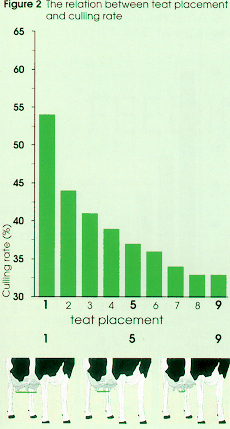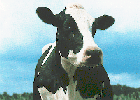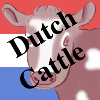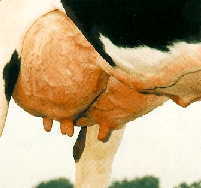
The relation between teat placement and culling rate


 Teat placement is an essential conformation trait for the cow's workability
Teat placement is an essential conformation trait for the cow's workability
The distance between the teat ends of the front teats are judged in scoring teat placement. The closer the teat ends of the front teats, the higher the score (see bottom part of figure 2). A score of 9 is given to a very close teat placement. The classifier judges from the front side of the udder in order to obtain the most accurate estimation of the distance between the front teats.

Teat placement is an essential confromation trait in regard to the cow's workability, longevity and udder health. That is why much emphasis is given to teat placement in the Dutch classification system. When teats are placed too far apart, it is rather difficult to attach the cluster unit. Moreover, it might go hand in hand with suction of "free air", which could result in reduced udder health and lower milk quality. Scores of 1 and 2 for teat placement (very wide) are therefore heavily penalized, whereas scores of 7 to 9 contribute very positively to the total udder score. A score of 9, which means a very close teat placement, is considered to be optimal. This is fully supported by figure 2, in which the relation between herdlife and teat placement is presented. A difference in herdlife of about 20 per cent is found between the teat placement scores of 1 and 9, indicating the importance of teat placement. Since lactation stage and interval between milking and scoring affect the distance of the teat ends of the front teats, the classifier takes this into account when scoring teat placement. Just after milking, the front teats should point inwards. If the udder is full, the teats should be straight down.